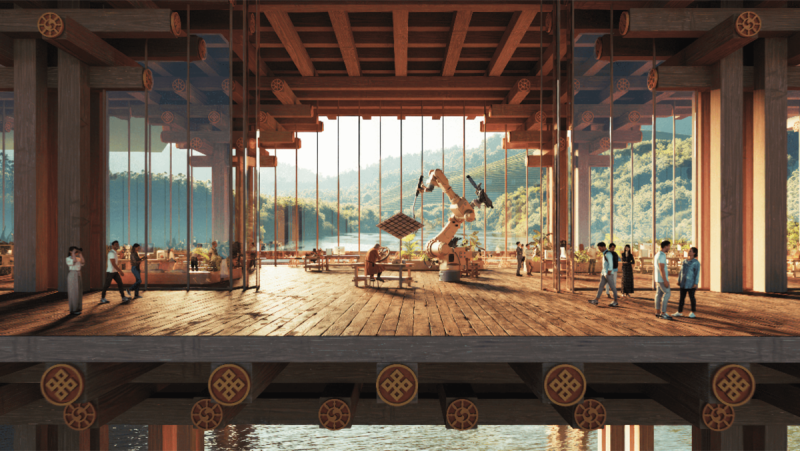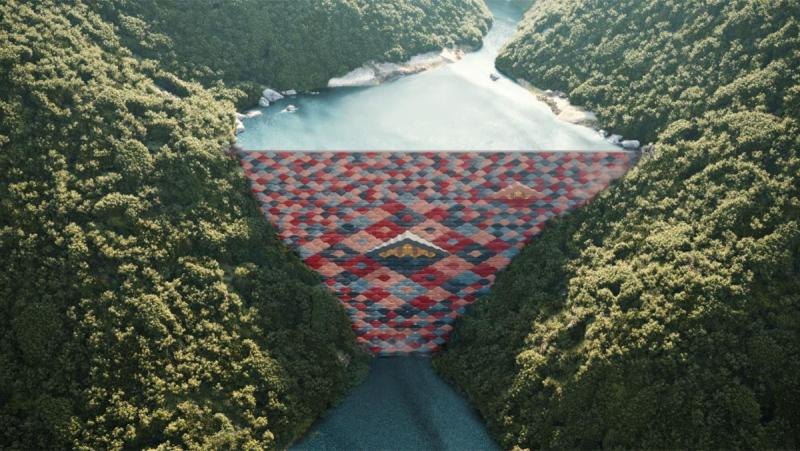Bhutan’s King Jigme Khesar Namgyel Wangchuck has announced plans to develop a new city dedicated to mindfulness. To be called Gelephu Mindfulness City Special Administrative Region (SAR), the city in southern Bhutan will be funded by investments in green energy, physical and digital connectivity, infrastructure and education.
Designed to position Bhutan as a new economic hub for South Asia, Gelephu Mindfulness City will be founded on Bhutanese values and the country’s “Gross National Happiness” philosophy, prioritizing not only economic development but also the well-being of every resident. Designed by Bjarke Ingels Group, Mindfulness City will include a series of “inhabitable bridges,” which are tailored to each of the nine “Gross National Happiness” domains and doubling as transportation infrastructure combined with civic and cultural facilities.
Each of the bridges will house a new airport; a Vajrayana spiritual center that allows glimpses into the daily practices of the monks and masters of mindfulness; a healthcare center; a university; a hydroponic and aquaponic greenhouse, putting ancient farming practices and modern agro-science on display for daily commuters; a cultural center to educate visitors about local culture and customs; and a market with Bhutanese textiles.

The final bridge, a hydroelectric dam, will be constructed on the city’s western border. It will have a visitor-friendly retaining wall that offers viewpoints, staircases for meditative walks and a temple. Visitors and pilgrims can ascend and descend along "countless" individual routes to the visitor center and temple, both set on the face of the man-made cliff.
Spanning more than 250,000 acres (or roughly 2.5 percent of the total surface area of Bhutan), Mindfulness City aims to amplify the country’s biodiversity with interconnected ecosystems forming 11 neighborhoods shaped by the flow of the 35 rivers and streams that run through the site. The resulting ribbon-like neighborhoods will resemble paddy fields, forming urban terraces that cascade down from the hills to the valley. Each neighborhood is designed on the principles of the Mandala. A series of repeating typologies will be organized symmetrically around a central public space, so that a gradual transition in density is created, from small buildings dispersed in the landscape in the north to larger footprints within an urban environment in the south. To protect existing and future development against flooding in the monsoon season, paddy fields will be established along the site’s rivers and tributaries. These will further function as biodiversity corridors for local species, leaving the migratory routes of elephants and other wildlife undisturbed.

Bhutan aims to have Gelephu emerge as the world’s “Modern Buddhist Lifestyle Destination” for spirituality, wellness and rejuvenation. Gelephu Mindfulness City will also be the gateway for tourists to explore the rest of Bhutan, located between two nature reserves—the Phibsoo Wildlife Sanctuary and Royal Manas National Park—as well as connected to Thimphu via Paro airport.
The first milestone in Gelephu’s development was the groundbreaking ceremony for the new international airport, which took place on December 23, 2023. Gelephu has existing tourism infrastructure, including hotels, but capacity will naturally expand with increased traffic and demand brought about by its growth.
Related Articles
Just Back: The Anam Mui Ne, Vietnam
Walk Japan Launches “Shikoku: Kochi & Ehime Discovery” Tour
Ananda in the Himalayas Launches Fertility Enhancement Program
Bali’s COMO Shambhala Estate Launches New Wellness Experiences